A quick guide to Sri Lanka’s UNESCO attractions
This website uses affiliate links which may earn a commission at no additional cost to you. As an Amazon Associate I earn from qualifying purchases.
Updated: 13th November 2022
Sri Lanka is renowned for its golden sand beaches and tea-plantation-coated countryside, yet there are plenty of historical sites to explore. In fact, there are eight World Heritage Listed locations across the country, and Sri Lanka’s UNESCO attractions provide an alluring mix of spirituality, ancient kingdoms, and endemic fauna and flora.
On my first visit to the country, truly one of the most beautiful islands I’ve visited, I was left in awe by the dazzling beaches, verdant and lofty tea country, and the ancient citadels and temples bejewel the nation.
With a rich and varied history that has seen the island ruled by various monarchs and powers over the years, the UNESCO attractions of Sri Lanka range from ancient pilgrimage sites to colonial towns.
While Sri Lanka has suffered in recent years from the global pandemic and political and economic upheaval, the country remains open for tourism, and the UK government has now lifted its advice against travel. Still, you’ll need to check Electronic Travel Authorisation requirements (a type of pre-arrival visa) before planning your trip to this magnificent nation that captured my heart.
Here’s a quick rundown of Sri Lanka’s UNESCO attractions, and if you want to discover even more reasons to visit the country, be sure to check out this more in-depth Sri Lanka travel guide.
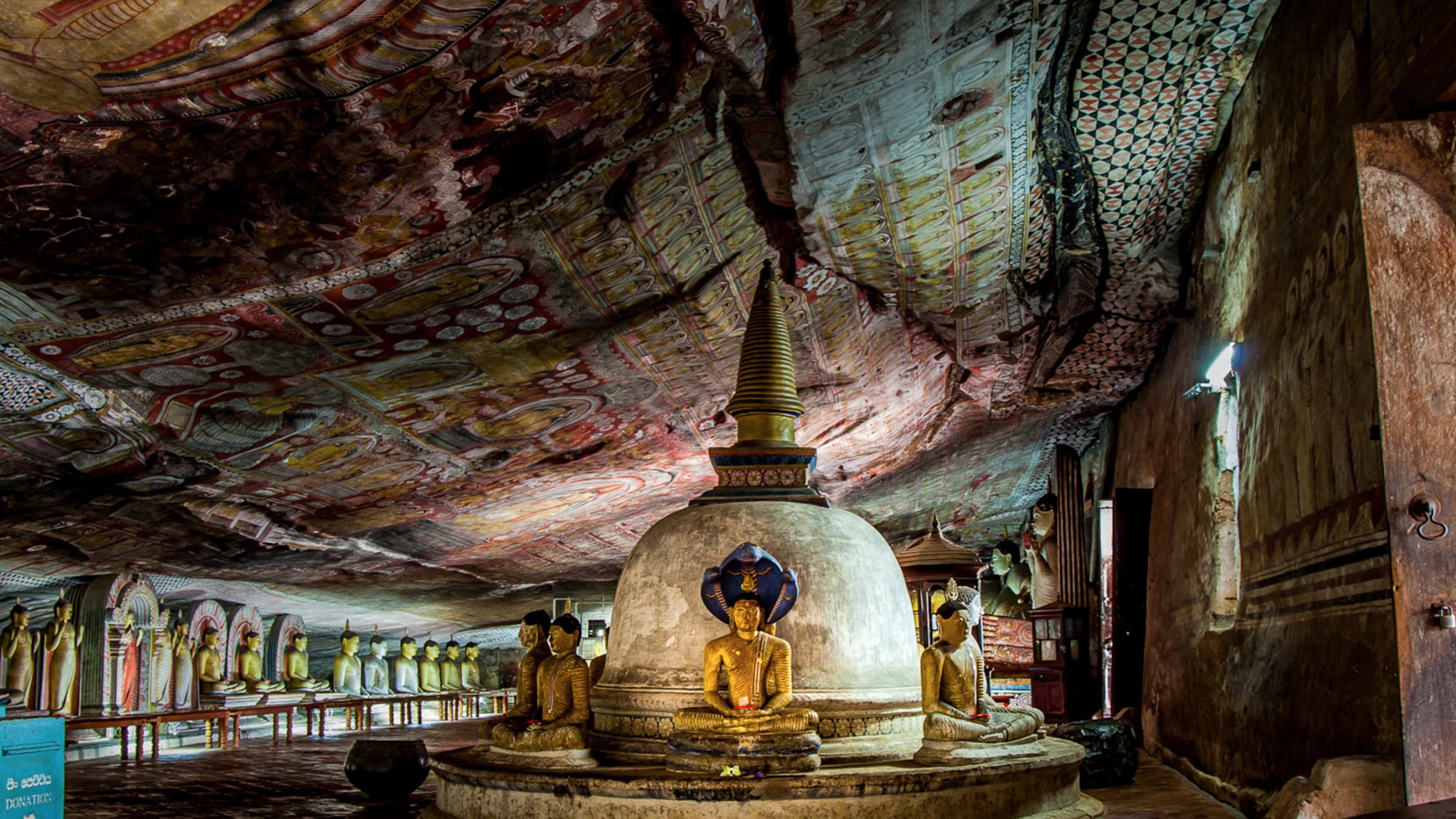
Golden Temple of Dambulla
I’ll start with my favourite of Sri Lanka’s UNESCO attractions, the pilgrimage site, the Dambulla Cave Temple.
For over two millennia, pilgrims have been flocking to this complex of temples, and across the five sanctuaries, there are some incredibly well-preserved cave paintings to be seen.
Tucked away behind the imposing Golden Buddha of Dambulla statue, the site is easily reached from Sigiriya (meaning the two UNESCO attractions can be combined), and a staircase leads up to the caves above.
With more than 150 statues decorating the complex and the magnificent Buddhist murals inside the caves, it’s a true sight to behold and shouldn’t be missed.
Ancient Polonnaruwa
While the Kingdom of Polonnaruwa isn’t one of the oldest UNESCO attractions in Sri Lanka, it doesn’t make it any less worthy of a visit.
This was the country’s second capital (after Anuradhapura, see below), serving as the nation’s helm between the 11th and 13th centuries. As one of the best preserved ancient cities, it’s unsurprising that Polonnaruwa has earned world heritage listed status.
Of particular fascination is the forward-thinking irrigation system constructed under the rule of King Parakramabahu. Keen to expand the country’s cultivation, an impressive network of water channels and reservoirs were erected. These can be best appreciated at Parakrama Samudra, alongside the medley of ancient monuments.

Ancient Citadel of Sigiriya
While this ancient citadel is impressive from afar, climbing Sigiriya is undoubtedly the best way to appreciate this ‘city in the clouds’, which was constructed in the 5th century.
Perched atop ‘the Lion’s Rock’ – which peaks at an impressive 180 metres – this historic settlement is a true masterclass in ancient engineering. Sadly, much of what was once crowning the granite peak has been lost; however, ruins and low walls remain, and the panoramas across the Central Province spilling out below are spectacular.
Most interesting, to me at least, was again the water systems used here, as it’s no easy task to get water pumped up to this height. Equally as impressive is the huge lion’s mouth, which dominates one of the final staircases – you’ll certainly want to pack your camera for this one!
If you only have time to visit a few of Sri Lanka’s UNESCO attractions, then Sigiriya and the nearby Dambulla Caves can be combined together into a long day trip.
Historic Sacred City of Anuradhapura
The heart and soul of Sri Lanka for centuries, only falling in 993 following an invasion, Anuradhapura is one of the most storied UNESCO attractions in Sri Lanka.
Enveloped by dense jungle, Buddhism defined the first capital of Sri Lanka which has been dated back as far as the 5th century BC. Having played home to countless Kings over the following centuries, unsurprisingly, the city flourished, and a wealth of grand palaces, temples, shrines, and monasteries were constructed here.
Nowadays, you can visit ancient sacred trees, explore lakeside temples such as Isurumuniya, and still see weather ponds that were used for irrigation, another testament to Sri Lanka’s ancient engineering practices.
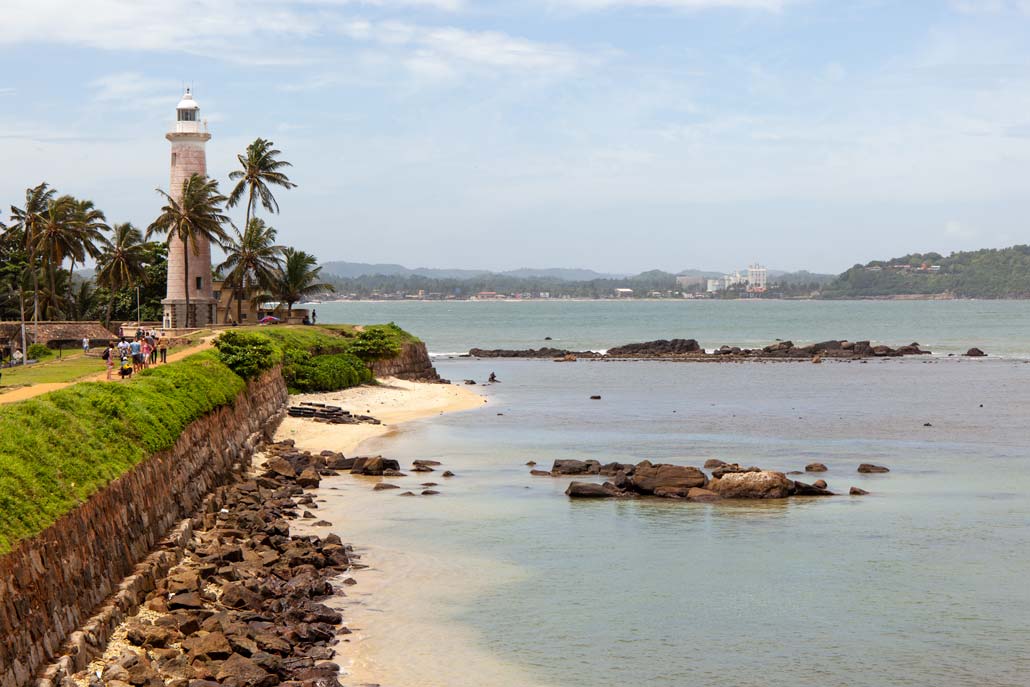
Old Town Galle
Situated on a southwestern headland, the historic city of Galle and its fortifications are another of Sri Lanka’s UNESCO attractions. The historic core tells a more ‘recent’ side of the nation’s history, in particular, the times of European invasion and colonisation.
Founded and constructed by the Portuguese in the 16th century and then later fortified and developed by the Dutch. By the time the British invaded and claimed the island, Galle had become well-established as a trading port for spices.
This continuous flow of people and products has led the Old Town to develop its style, differing slightly from the rest of the country. With a mix of European and Asian architecture, it’s a delight just to spend a day wandering here, hopping between the historic mansions, clock tower, church, and museums.
Galle and the nearby beaches make for a great and peaceful base to explore this part of the country and discover some of the best things to do in Sri Lanka.
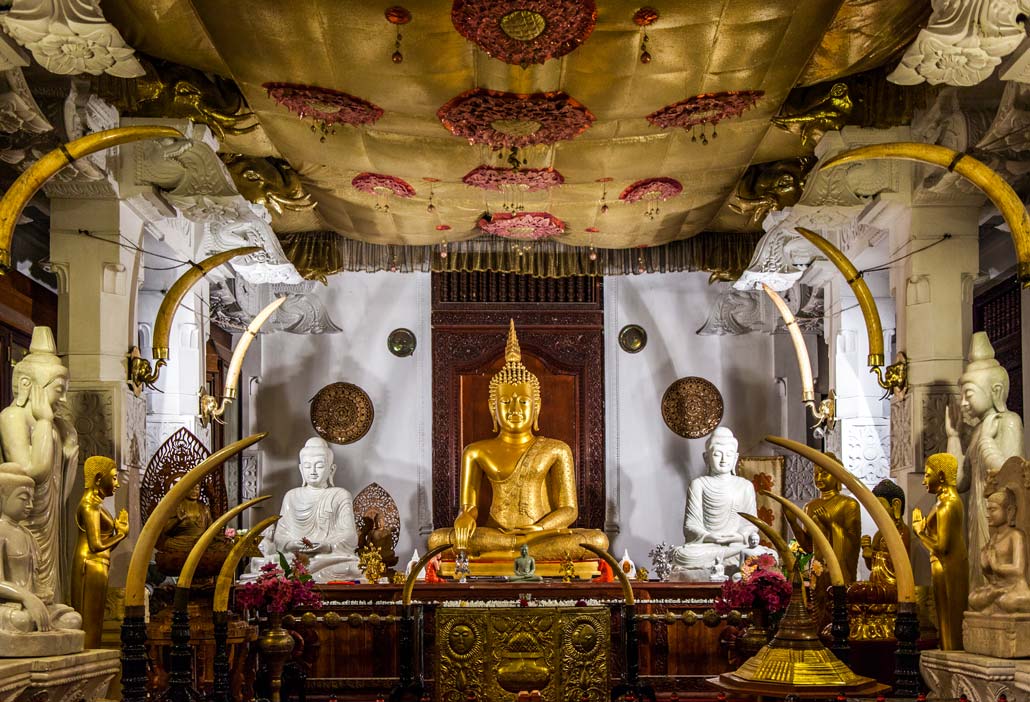
Sacred City of Kandy
While the whole ancient City of Kandy is World Heritage Listed, it’s the Temple of the Tooth that is perhaps the best-known reason for this destination being a popular UNESCO attraction in Sri Lanka.
A vast and important Buddhist site that dates back to the 14th century, Kandy was the final Sinhalese monarch’s capital before the British took control of the country. Once you enter the complex, you’ll feel a serene sense wash over you, although the crowds can make this disappear quite quickly.
If you have the chance to visit the Temple of the Tooth, which houses a sacred tooth from Lord Buddha, you’ll encounter the busiest part of Kandy, as the doors to this temple only open three times daily.
Central Highlands
While Sri Lanka’s UNESCO attractions mainly focus on ancient architectural and archaeological treasures, two of the World Heritage Listed sites are natural rather than manufactured.
The most spectacular, to me at least, is the Central Highlands, which span across the country’s south-central region. Clambering thousands of metres above sea level, forests line the mountainsides, and wildlife like the Sri Lankan leopard find refuge in the untouched quarters.
Crossing Sri Lanka’s inland beauty is just as majestic as lounging on the beaches, and the now iconic Kandy to Ella train journey is one of the best ways to traverse the lush and verdant interior.
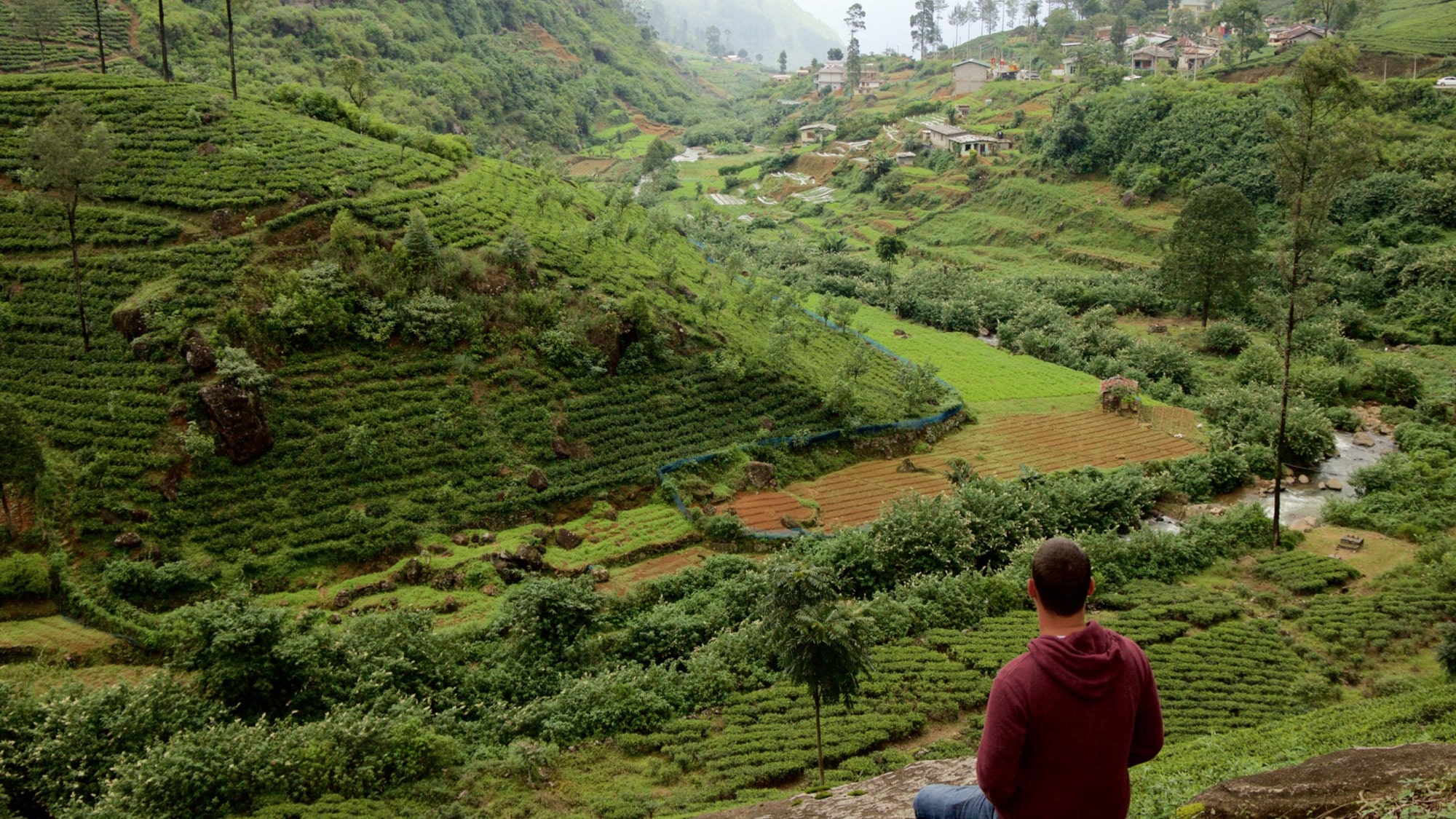
Sinharaja Forest
The final UNESCO attraction on the list is one I sadly didn’t make it to: the Sinharaja Forest Reserve.
A biodiverse national park, its position inland from Galle means it’s not that hard to visit location-wise. However, to protect the rich fauna and flora, you can only enter the park on foot when a certified guide escorts you.
Housing endemic trees and endangered species of birds, wildlife, and amphibians, this almost untouched tropical rainforest promises one of the most natural experiences in the whole country. Hopefully, its World Heritage Listed statues help keep it that way!

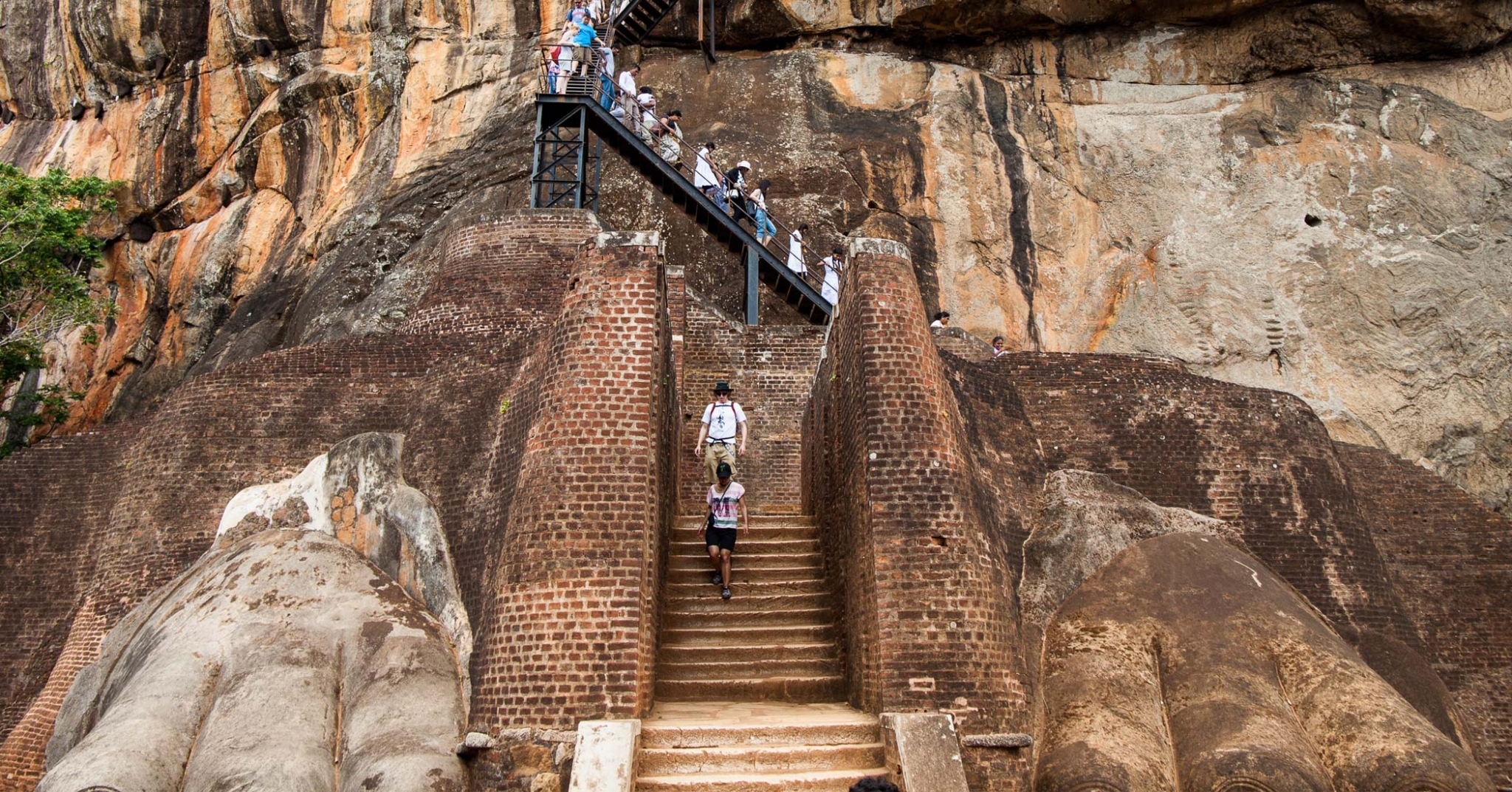



Leave a Reply
Want to join the discussion?Feel free to contribute!